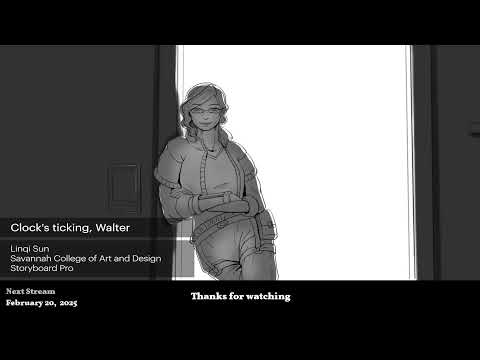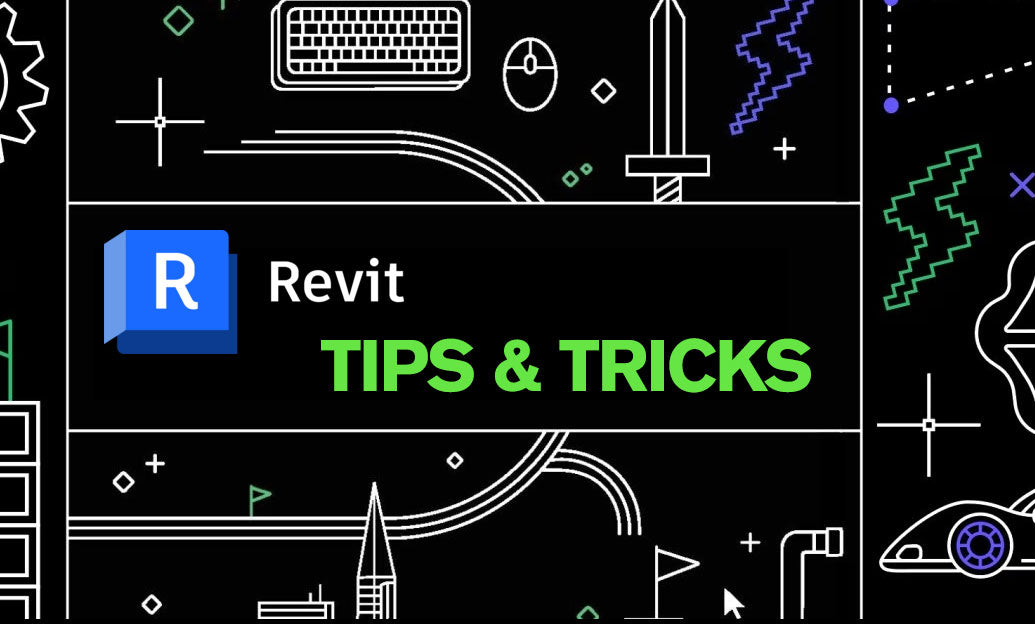Your Cart is Empty
Customer Testimonials
-
"Great customer service. The folks at Novedge were super helpful in navigating a somewhat complicated order including software upgrades and serial numbers in various stages of inactivity. They were friendly and helpful throughout the process.."
Ruben Ruckmark
"Quick & very helpful. We have been using Novedge for years and are very happy with their quick service when we need to make a purchase and excellent support resolving any issues."
Will Woodson
"Scott is the best. He reminds me about subscriptions dates, guides me in the correct direction for updates. He always responds promptly to me. He is literally the reason I continue to work with Novedge and will do so in the future."
Edward Mchugh
"Calvin Lok is “the man”. After my purchase of Sketchup 2021, he called me and provided step-by-step instructions to ease me through difficulties I was having with the setup of my new software."
Mike Borzage
Design Software History: The Evolution and Impact of Community Contributions in Open Design Software: A Historical and Technical Overview
January 18, 2025 5 min read


Introduction
In the ever-evolving landscape of the design industry, open design software has emerged as a transformative force that reshapes how designers and engineers approach their craft. Rooted in the principles of open-source development, these software platforms break down barriers imposed by proprietary systems, offering accessibility, flexibility, and collaborative potential previously unattainable. The significance of open design software lies not only in its cost-effectiveness but also in its ability to foster innovation through communal effort. By opening source code for public use and modification, these tools invite a global community of users to become contributors, driving the software's evolution in directions that reflect the diverse needs and creative aspirations of its user base. Community contributions are the lifeblood of this ecosystem, serving as catalysts for continual improvement and enabling rapid advancements in features, usability, and adaptability. This article delves deeply into the historical and contemporary impact of community contributions in open design software, exploring how these collaborative efforts have shaped the software landscape and influenced the broader design industry. We examine the origins of community involvement in open-source design projects, understand its impact on technical innovations, discuss the challenges and opportunities it presents, and consider the future trajectory of this collaborative phenomenon.
Historical Context of Community Contributions in Open Design Software
The genesis of community contributions in open design software can be traced back to the foundational moments of the open-source movement, which challenged traditional notions of software development and ownership. In the late 20th century, as the software industry burgeoned, a counter-movement emerged advocating for free and collaborative software creation. One of the earliest and most significant examples in the design realm is BRL-CAD. Developed initially by the U.S. Army Ballistic Research Laboratory (now the Army Research Laboratory) in 1979, BRL-CAD was designed for ballistic and electromagnetic analyses. Recognizing the potential benefits of open collaboration, BRL-CAD's source code was released to the public in 2004 under an open-source license. This decision transformed the software from a specialized military tool into a widely accessible platform, enabling developers and designers worldwide to contribute enhancements in solid modeling, ray tracing, and system performance.
Another pivotal project is Inkscape, which emerged in 2003 from efforts to create a robust, open-source vector graphics editor. Building upon the codebase of Sodipodi, Inkscape's development was fueled by a community committed to creating a free alternative to commercial software like Adobe Illustrator. The community's contributions were crucial in developing key features such as node editing, complex path operations, and support for various file formats. This collaborative effort democratized vector graphics editing, making it accessible to users who could not afford expensive proprietary software. The influence of the open-source movement, championed by advocates like Richard Stallman—founder of the Free Software Foundation—provided the ideological foundation for these projects. Their emphasis on software freedom, where users have the liberty to run, modify, and distribute software, catalyzed a shift in how software was perceived and utilized. The success of open-source operating systems like Linux, initiated by Linus Torvalds, further validated the model of community-driven development. These historical milestones underscore the critical role that community contributions have played in the inception and growth of open design software, setting a precedent for future projects and cultivating a culture of collaboration and shared innovation.
Impact of Community Contributions on Technical Innovations
The participatory nature of open design software communities has led to significant technical innovations, expanding the capabilities and applications of these tools beyond their original scope. The collective problem-solving and iterative development processes inherent in community contributions have accelerated enhancements in software features, performance optimization, and user experience improvements. Blender, the open-source 3D creation suite, exemplifies this phenomenon. After the financial bankruptcy of Not a Number Technologies in 2002, the Blender community rallied to secure the rights to the software's source code through a crowdfunding campaign, demonstrating collective commitment to its continuation and development. Once the source code was released under the GNU General Public License, a surge of community contributions followed. Developers worldwide enhanced Blender with features like fluid and smoke simulations, advanced sculpting tools, and the integration of the Cycles rendering engine, which introduced real-time rendering capabilities and support for GPU acceleration. These innovations positioned Blender as a viable competitor to proprietary 3D software, widely used in professional animation, visual effects, and game development.
Similarly, FreeCAD has benefited immensely from community contributions. As a parametric 3D modeler, FreeCAD's modular architecture allows for the development of specialized workbenches catering to various disciplines. Community developers have created extensions for architectural design, mechanical engineering, and finite element analysis, significantly broadening the software's utility. The role of collaborative platforms like GitHub cannot be overstated in facilitating these advancements. GitHub provides infrastructure for version control, issue tracking, and code review, enabling seamless collaboration among dispersed contributors. Forums and mailing lists offer spaces for users to share ideas, provide feedback, and support each other, fostering a sense of community and shared purpose. Direct communication between users and developers ensures that software development aligns closely with user needs, leading to practical solutions and user-friendly interfaces. This model of open collaboration has not only accelerated technical innovation but also cultivated a community invested in the software's success and sustainability.
Challenges and Opportunities in Community Contributions
While the benefits of community contributions are significant, open-source design software projects often confront challenges that stem from their open and collaborative nature. Coordination among a large, decentralized group of volunteers can be complex. Without formal hierarchies or management structures, projects may struggle with overlapping efforts, inconsistent coding practices, and divergent visions for the software's direction. Governance becomes a critical issue; establishing clear leadership roles and decision-making processes is essential to maintain coherence and progress. Funding is another critical concern. Unlike commercial software backed by corporate investment, open-source projects rely on donations, sponsorships, and sometimes scarce funding sources. Insufficient financial support can lead to slower development, inability to maintain essential infrastructure, or loss of key contributors who need to prioritize paid work.
These challenges, however, also present opportunities for growth and innovation. Recognizing and addressing these issues can lead to more resilient and effective community structures. Strategies to enhance participation and sustainability include:
- Implementing transparent governance models that balance democratic input with efficient decision-making. Projects like Blender have established foundations to manage resources and guide development priorities.
- Creating clear contribution guidelines and coding standards to streamline collaboration and reduce friction among contributors.
- Offering mentorship and support programs to onboard new contributors, expanding the community and ensuring knowledge transfer.
- Pursuing diverse funding avenues, such as crowdfunding campaigns, grants, or partnerships with educational institutions and corporations that utilize the software.
By embracing these strategies, open design software communities can transform challenges into catalysts for innovation and cohesion. Emphasizing inclusivity and shared ownership not only enhances the software but also builds a committed user base that advocates for the project's longevity and success.
Conclusion
The evolution of open design software underscores the profound impact that community contributions have on technological advancement and industry transformation. From the early days of BRL-CAD and Inkscape to the contemporary successes of Blender and FreeCAD, the collective efforts of dedicated individuals have driven innovation, expanded accessibility, and challenged the dominance of proprietary systems. The ethos of collaboration and shared purpose permeating these communities has not only produced powerful, feature-rich tools but also fostered a culture of continuous learning and mutual support. As the design industry continues to evolve, the role of community contributions is poised to become even more significant. Advances in technology, such as cloud computing and artificial intelligence, present new frontiers for exploration and development within open-source frameworks. Increased professional adoption of open design software signals a shift in industry attitudes, recognizing the value and potential of community-driven solutions. For those considering joining these communities, the opportunity to contribute to meaningful projects, enhance personal skills, and collaborate with like-minded individuals is compelling. By engaging with and supporting the thriving open-source design ecosystem, new contributors can help shape the future of design software, ensuring it remains dynamic, innovative, and accessible to all.
Also in Design News

2D/3D Animation:Collaboratory with Mike Morris and Aaron Paetz
February 20, 2025 1 min read
Read More
ZBrush Tip: Enhancing Organic Sculpting Techniques in ZBrush: Key Tips and Resources
February 20, 2025 2 min read
Read More
Revit Tip: Mastering Revit's Edit Profile Tool for Customized Design Efficiency
February 20, 2025 2 min read
Read MoreSubscribe
Sign up to get the latest on sales, new releases and more …


